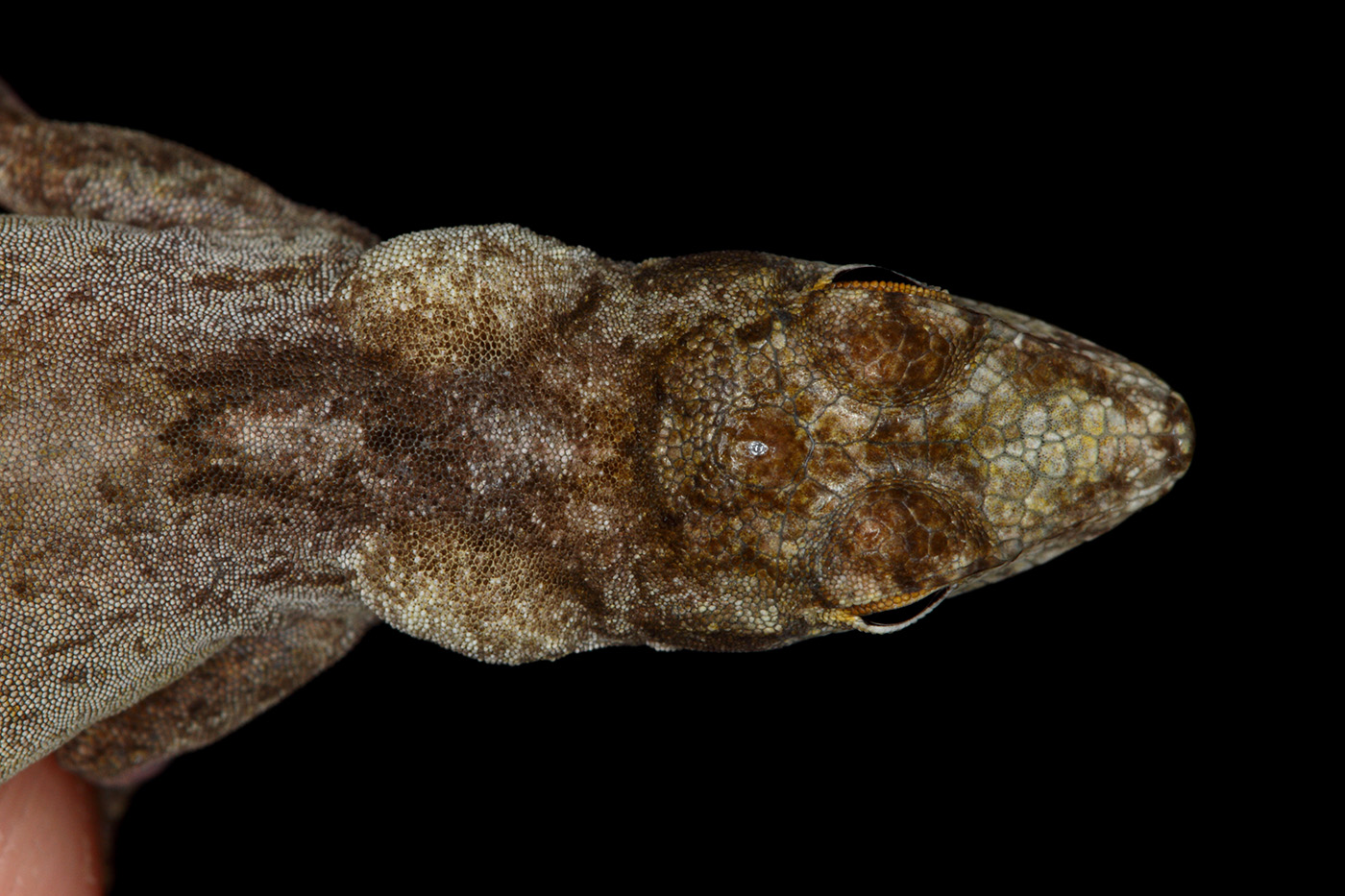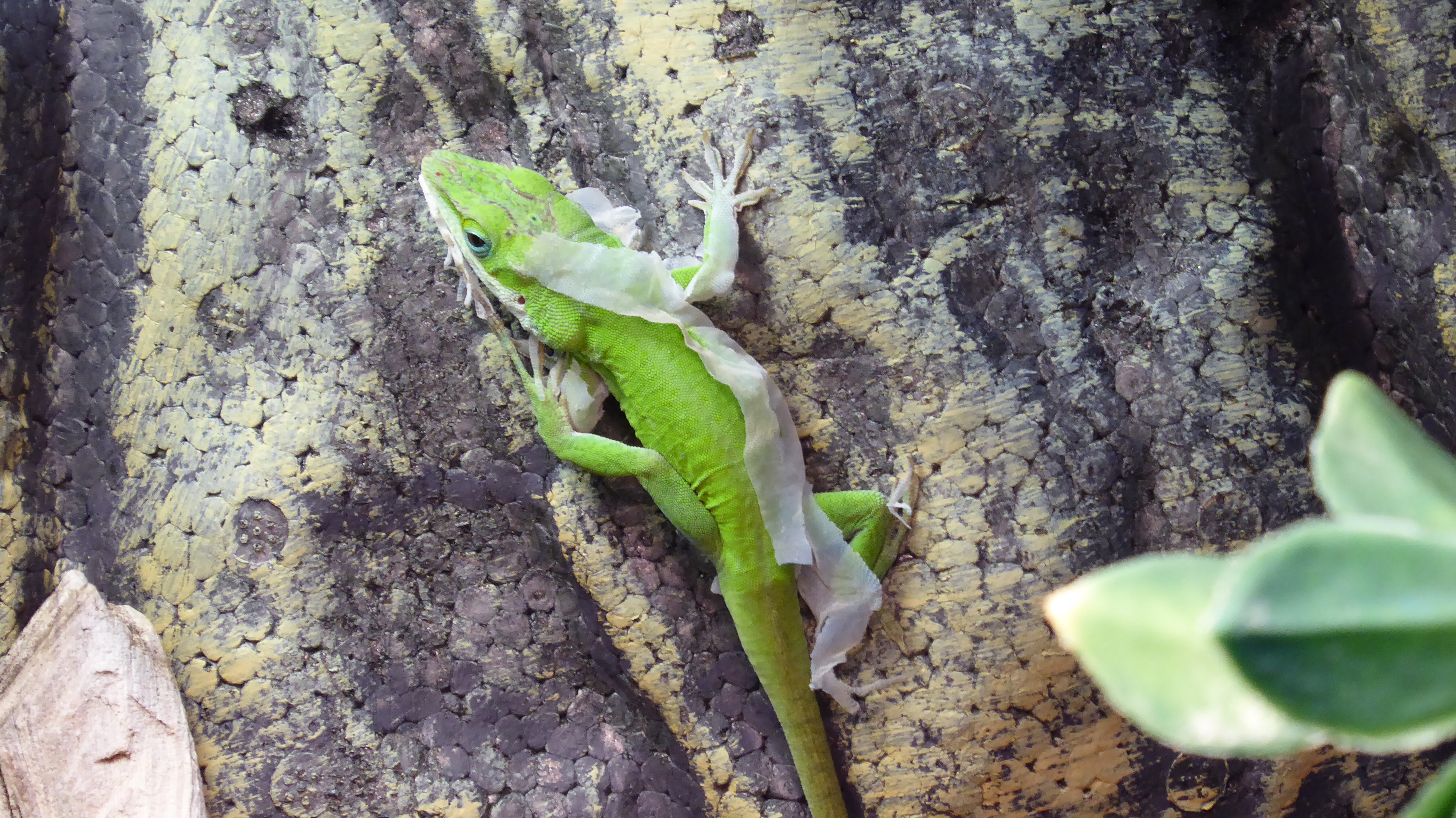I’ve been looking through a lot of anole museum specimens lately, and I’ve noticed that many of them have pretty pronounced endolymphatic glands, which made me curious about their prevalence and function in anoles generally.
Endolymphatic glands serve as calcium reserves, and are present in many animals, including a number of reptile and amphibian clades. According to Etheridge (1959), these glands are present in anoles and a few of their close relatives (e.g. Polychrus), but not in any other Iguanians. But it looks like most of the research on their function (in reptiles) has focused on geckos. In geckos, the size of the glands has been shown to fluctuate in response to both stress and reproductive activity, supporting the idea that the stored calcium is used in egg production, both for the yolk and the shell (Brown et al. 1996, Lamb et al. 2017). However, in anoles and geckos, these glands are present in both males and females, so their function isn’t limited to providing calcium for eggs (Etheridge 1959, Bauer 1989, Lamb et al. 2017).
But I haven’t found much information on these glands in anoles. I personally haven’t noticed them in the wild, but so far I’ve found very pronounced glands in 13/66 museum specimens, and some of them are really striking (see photos)! So I’m curious to hear, how often do you other anole-ologists see these enlarged glands? Is there any other literature about their prevalence, seasonality, or function in anoles that I’ve overlooked? Seems like we might be lagging behind the gecko crowd on this topic!
Citations:
Bauer A (1989) Extracranial Endolymphatic Sacs in Eurydactylodes ( Reptilia : Gekkonidae), with Comments on Endolymphatic Function in Lizards. J Herpetol 23:172–175.
Brown SG, Jensen K, DeVerse HA (1996) The Relationship Between Calcium Gland Size, Fecunduty and Social Behavior in the Unisexual Gecks Lepidactyluse Lugubris and Hemidactylus Garnotii. Int J Comp Psychol. doi: 10.5811/westjem.2011.5.6700
Etheridge R (1959) The relationships of the anoles (Reptilia: Sauria: Iguanidae) an interpretation based on skeletal morphology.
Lamb AD, Watkins-colwell GJ, Moore JA, et al (2017) Endolymphatic Sac Use and Reproductive Activity in the Lesser Antilles Endemic Gecko Gonatodes antillensis (Gekkota: Sphaerodactylidae). Bull Peabody Museum Nat Hist 58:17–29.
- Brown Anole in Green Bay! - April 20, 2021
- Meet the Lizard Biologists behind Black Birders Week! - June 13, 2020
- Tail Crest Variation in Urban and Forest Habitats - October 27, 2019



Kevin de Queiroz
When the endolymphatic sacs are calcified, they are easily seen in radiographs (see Etheridge [1959] for details).
Miguel Landestoy
I have only seen that in (Hispaniolan) Anoles of the Trunk ecomorph. In Anolis distichus from Isla Catalina (photo attached), a small island in the eastern Dominican Republic with plenty of exposed limestone. And in the related Anolis brevirostris, one individual photographed by a friend in Pedernales, an area surrounded by karst.
There were several A. distichus individuals with that condition, though did not see it in other species (e.g. A. cybotes).

James T. Stroud
Weird! I have never seen them in anoles (admittedly in my experience of a limited number of species), but, like you note, they’re pretty common and obvious in many geckos, particularly Phelsuma sp. (e.g. klemmeri always have hugely pronounced calcium sacs).
Petra Vasilik
Hi! I have clearly seen this in both my male and female. I didn’t know what it was and was concerned that they were lymph nodes and that they were ill, but they didn’t act ill. Attached is a photo of my male from a couple of weeks ago while shedding and you can see the “lumps.” I wonder if it happens more generally in both male and female during the reproductive cycle?

Sofia Prado-Irwin
That very well could be, but as far as I can tell, the research hasn’t been done yet!
Kurt Schwenk
They may appear much more prominent in preserved specimens owing to shrinkage caused by desiccation or whatever, so perhaps not as commonly seen in live specimens, even if present.
Sofia Prado-Irwin
Good point, I hadn’t thought of that. But some of these are pretty huge, so it’s hard to imagine that they wouldn’t be visible in the live lizards. I’m guessing there’s a pretty big range in size, and of course only the extreme ones are visible without radiographs.
Levi Gray
So glad someone is interested in this! I pay attention to them (always reminded me of the glands in Phelsuma) whenever I’m in the field but haven’t been good about keeping track of it in my notes. Regardless, I’ve noticed that they are either far more common or more recognizable in females. I hardly ever notice them in males, which might make sense given the research on geckos you cited.
Sofia Prado-Irwin
Yeah, I’m definitely going to look more closely next time I’m in the field! Cool to hear that your observations match the predictions.
Margo
Pardon my ignorance. Do any birds have calcium sacs? I looked it up and couldn’t find an answer.
Jay
I kno this is an old post but i also noticed one of my female anoles have this going on. Also just realized this is 5 years old r.i.p. to your old anoles
Donna
This condition seems to be most prevalent in captive green anoles, and it typically proves lethal. The cause is absolutely unknown, but I don’t think this is simple calcium storage, I think it is a pathology of some type that needs to be solved.
Amanda Landry
I have an anole with one enormous sack on his side, he has had it for about a year about the size of a Lima bean.
Jonathan Losos
check out this post: https://www.anoleannals.org/2018/12/31/27842/
Unsure and scared
I look up what to do if my brown anole egg has lumps but no one knows what to do and I can feel some thing in the egg, and it doesn’t smell. Is it getting ready to hatch? I rotated it 5 times a day and squirt the ground 3-4 times, since the water evaporates when I leave it in the sun.
Unsure and scared
My egg also has half of it turned brown and a… lump in it like it’s caved in. I can feel something like a tense mucsel, but it’s wierd and I can’t find anything. Am I the first for this to happen to? It was doing fine on Saturnday, and Today, Tuesday, it has the lump. It was flat as a pancake a week ago. I know that it’s an anole egg, so I’m confused. Please reply soon.
Steven A. Nole
Try asking this on reddit.
Unfortunately, the web is currently dominated by social media giants like reddit and its ilk, and most of the knowledgeable people who would otherwise grace smaller, more independent websites such as this one are forced to be there instead. This probably won’t change until smaller, more independent websites come together and create a consortium.
https://www.reddit.com/r/Anoles/
https://www.reddit.com/r/reptiles/
https://www.reddit.com/r/Lizards/
Antoinette Keen
with all due respect, i hesitate going to Reddit anymore due to fear of security breach. maybe this adds to your comment on how message boards are no longer widely used.
Steven A. Nole
Yes, the web felt safer and more secure when its millions of eggs were distributed in thousands of baskets.
Right now, it brings to mind the Library of Alexandria or the House of Wisdom and feels like a metaphorical tinderbox ripe for the burning.
Unsure and scared2
My egg also has half of it turned brown and a… lump in it like it’s caved in. I can feel something like a tense mucsel, but it’s wierd and I can’t find anything. Am I the first for this to happen to? It was doing fine on Saturnday, and Today, Tuesday, it has the lump. It was flat as a pancake a week ago. I know that it’s an anole egg, so I’m confused. Please reply soon.